Rugby Central
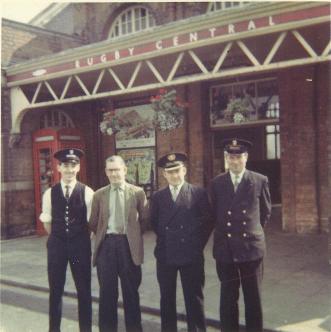
Rugby Central station staff 1963
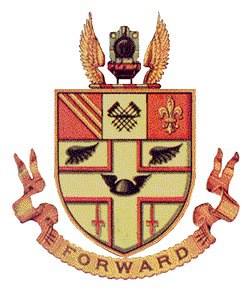
Great Central Railway Emblem
I lived at Rugby for 19 years and not far away from the disused Grand Central Railway cutting, our lives used to take there for many reasons and activities like family walks, our allotment was next to it, we went cross country running with the school, school science and geography lessons and even walks with the Girl Guides.
We knew where the station entrance had been on Hillmorton Road bridge as there was an odd shape on the top and the Station Managers house still stands. Below still stands the island platform and we were always told that there was a ghost of a lady under the road bridge which is confirmed by a sighting written in a book about railway ghosts.
At one time Rugby had seven different lines leading from it and that did not include the Great Central Line.
The LNWR station in Rugby was called Rugby Midland and lines went to Leicester, Trent Valley, Birmingham, Leamington Spa,London Euston, Northampton and Peterborough it opened 1838 and had various locations.
In the mid 19th century Rugby Midland was one major junction in Britain and was heavily congested as the station provided Midland Railway from Leicester with the only link to London. In the late 1860s a route was built from Leicester to London St. Pancras.
The Great Central Line station was called Rugby Central and went south to London Marylebone and north to Leicester, it opened 1899 and closed 1969.
Most of these lines including the Great Central were closed due to the Beeching Axe 1960.
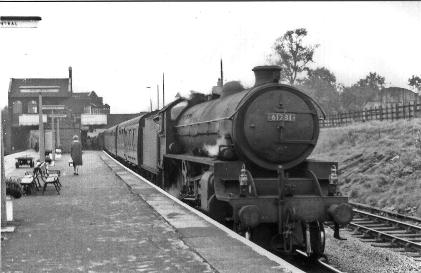
B1 61281 at Rugby Central , 14th September 1962
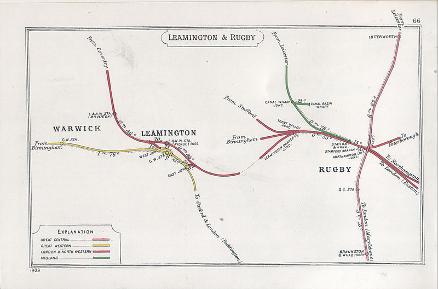
Map of lines passing through Rugby
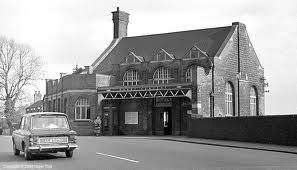
Rugby Central Station Entrance photo©Nigel Tout
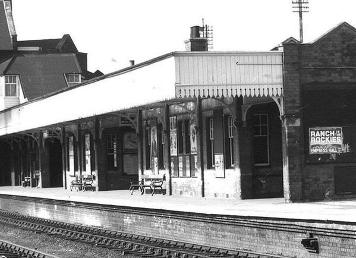
Rugby Central Down Platform
The Great Central Main Line (GCML), also known as the 'London Extension' of the Manchester, Sheffield and Lincolnshire Railway (MS & LR) , is a former railway line which opened in 1899 linking Sheffield with Marylebone Station in London via Nottingham and Leicester. The GCML was not intended to duplicate the Midland line by serving a great many centres of population. Instead it was intended to link the MS & LR's system stretching across northern England directly to London at as high a speed as possible and with a minimum of stops and connections: thus much of its route ran through sparsely populated countryside, this is partly why the passenger services were not that popular.
In 1864 Sir Edward Watkin took over directorship of the Manchester, Sheffield & Lincolnshire Railway. He had grand ambitions for the company to transform it from a provincial middle-of-the-road railway company into a major national player. Watkin was a visionary who wanted to build a new railway line that would not only link his network to London, but which one day would be expanded and link to a future Channel Tunnel (although this ultimate ambition was never realised). He grew tired of handing over potentially lucrative London-bound traffic to rivals, and, after several attempts to co-build a line to London with other companies, decided that the MS & LR needed to create its own route to the capital.
At the time many people questioned the wisdom of building the line, as all the significant population centres which the line traversed were already served by other companies. In 1897 The MS & LR changed its name to the grander sounding Great Central Railway to reflect its new-found national ambitions.
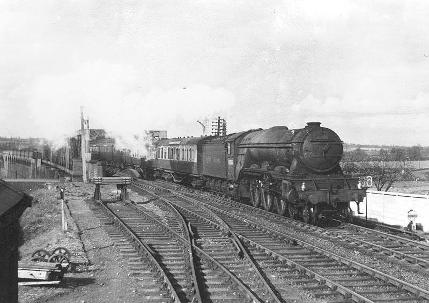
Rugby Birdcage which crossed the LMSR mainline
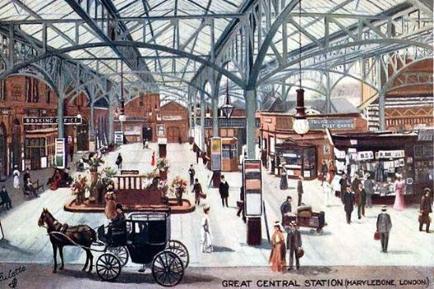
Marylebone Station postcard
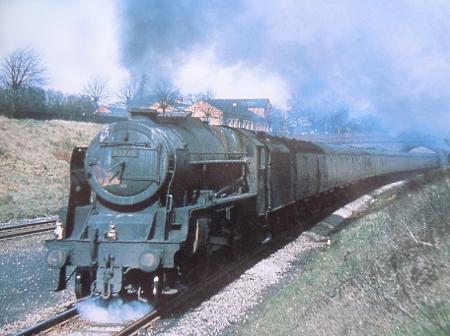
45735 at Rugby Central July 1964
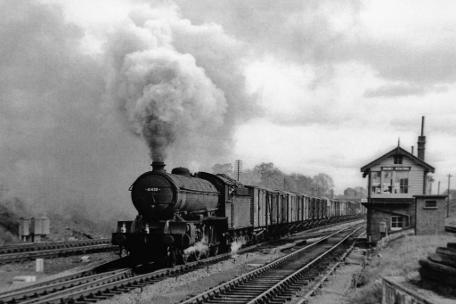
Train approaching the station, passing the signal box Photograph taken by Anthony E. Newman
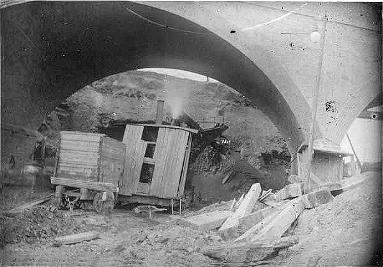
Digging out the cutting south of Rugby going North to the Station.

Ashlawn Road Bridge, Rugby spanning the Great Central Railway
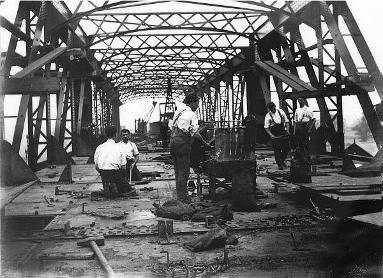
Construction of the 'Birdcage' which would carry the Great Central Railway over the L.M.S.R mainline.
Features of the line were unlike other railway lines in Britain, the line was built to an expanded continental loading gauge which meant it could accommodate larger sized continental trains, in anticipation of traffic to a future Channel Tunnel.
Almost all stations were built to an "island platform" design with one platform between the two tracks instead of two at each side. This was so that the tracks only needed to be moved farther away from the platform if continental trains were to travel the line, rather than wholesale redesign of stations.
Traffic was slow to establish itself on the new line, especially passenger traffic. Enticing customers away from the established lines into London was more difficult than the GCR's builders had hoped. However, there was some success in appealing to higher-class 'business' travellers in providing high-speed luxurious trains. These were in a way the first long-distance commuter trains. Passenger traffic was never heavy throughout the line's existence, but freight traffic grew healthily and became the lifeblood of the line, mainly being coal, iron ore, and fish and banana trains.
The First World War and the hostile European political climate which followed, ended any possibility of a Channel Tunnel being constructed within the GCR's lifetime.
The Booking Office was at road level on Hillmorton Road bridge and access down to the platform was by covered stairs. The whole layout had many similarities to the Great Central Railways Loughborough Central Station which is now the Head quarters of the G.C.R. Heritage Line.
Trains to London stopped running in 1966 and buffer stops were placed at the south end of the station. A service ran to Nottingham until 1969 and the station closed down.
Rugby Borough Council bought the whole of the former Great Central Railway track bed through Rugby in 1970 and now it is a nature walk called the Great Central Way.
The goods shed remained until 1998 when it was demolished to make way for housing, a road called 'Timber Close'.
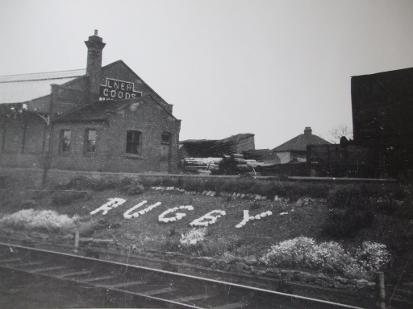
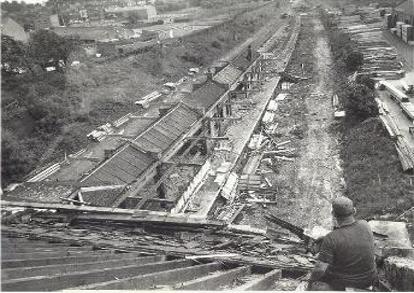
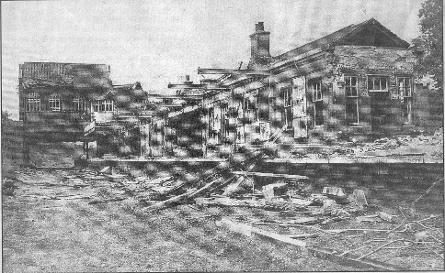
A very sad sight of Rugby Central station being dismantled after closure. There would have been rich pickings of memories for collectors as station signs were just strewn across the paltforms.
The worker in the left photo is sitting on the booking office roof and taking the tiles off, an example of working conditions before Health and Safety came into force. Below the track has already been lifted. To the right is the goods shed which for many years after was used as a timber yard.
Rugby Central platform 2012 photo©SJBrown
Rugby Central platform 2012 photo©SJBrown
Location of Rugby Central Booking Hall photo©SJBrown
The Booking Hall once stood here up on the road level photo©SJBrown
©SJBrown